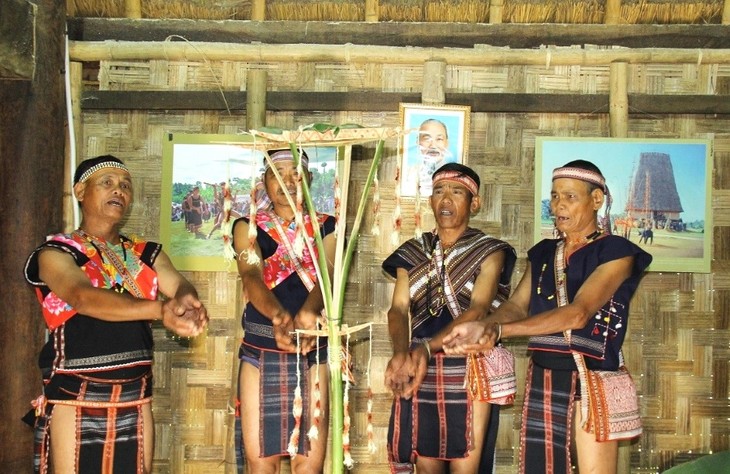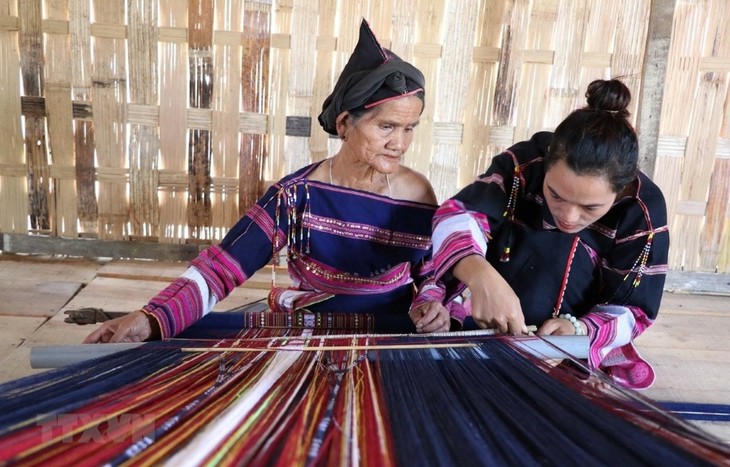(VOVWORLD) - In the Central Highlands of Vietnam, especially during festivals, visitors will see men wearing small, eye-catching brocade bags. The crossbody bag is an important accessory for Bana men.
 Bana men carry tobacco pipes and personal items in crossbody bags. (Photo: thethaovanhoa.vn) Bana men carry tobacco pipes and personal items in crossbody bags. (Photo: thethaovanhoa.vn) |
In the past Bana men wore loincloths and sleeveless brocade shirts without pockets, or went shirtless, to work in the forest or field or to community events such as a gong performance. They needed a crossbody bag to carry their pipes, jewelry, and other personal items.
“The men carry tobacco pipes and personal items. On holidays and worshiping days, men have to wear a crossbody bag. Women wear a rattan papoose. Men also carry knives, musical instruments, and gongs,” said a Bana man.
“They wear crossbody bags while playing gongs. During the performance, they wear loincloths and keep everything in their bag,” another Bana person elaborated.
 It may take a woman a month to weave enough brocade cloth to make 5 or 6 bags. (Photo: baodantoc.vn) It may take a woman a month to weave enough brocade cloth to make 5 or 6 bags. (Photo: baodantoc.vn) |
The bag is about 20 centimeters square and meticulously embroidered on both sides. Artisan Dinh Ply of Kbang district, said the bags are designed and made by the women. “In Central Highlands ethnic groups, men don’t do weaving. Women do everything – spinning yarn, dying threads, and weaving. The bags are black, red, white, and yellow.”
White and red symbolize vitality, passion, love, and aspiration. Black represents the land, seed germination, and plant growth. The bag and the strap are elaborately embroidered with images of forests, mountains, rivers, communal houses, and tombs.
“It may take a month to weave enough brocade cloth to make 5 or 6 bags. Then the women embroider and decorate the bags using their imagination,” artisan Dinh Ply said.
According to Dinh Ply, almost every ethnic group in the Central Highlands decorates their shirts, pants, hats, belts, and bags with floral motifs. But each group has its own style. “They depict familiar things like trees and flowers in the forest. They observe nature and then embroider the patterns they see,” he said.